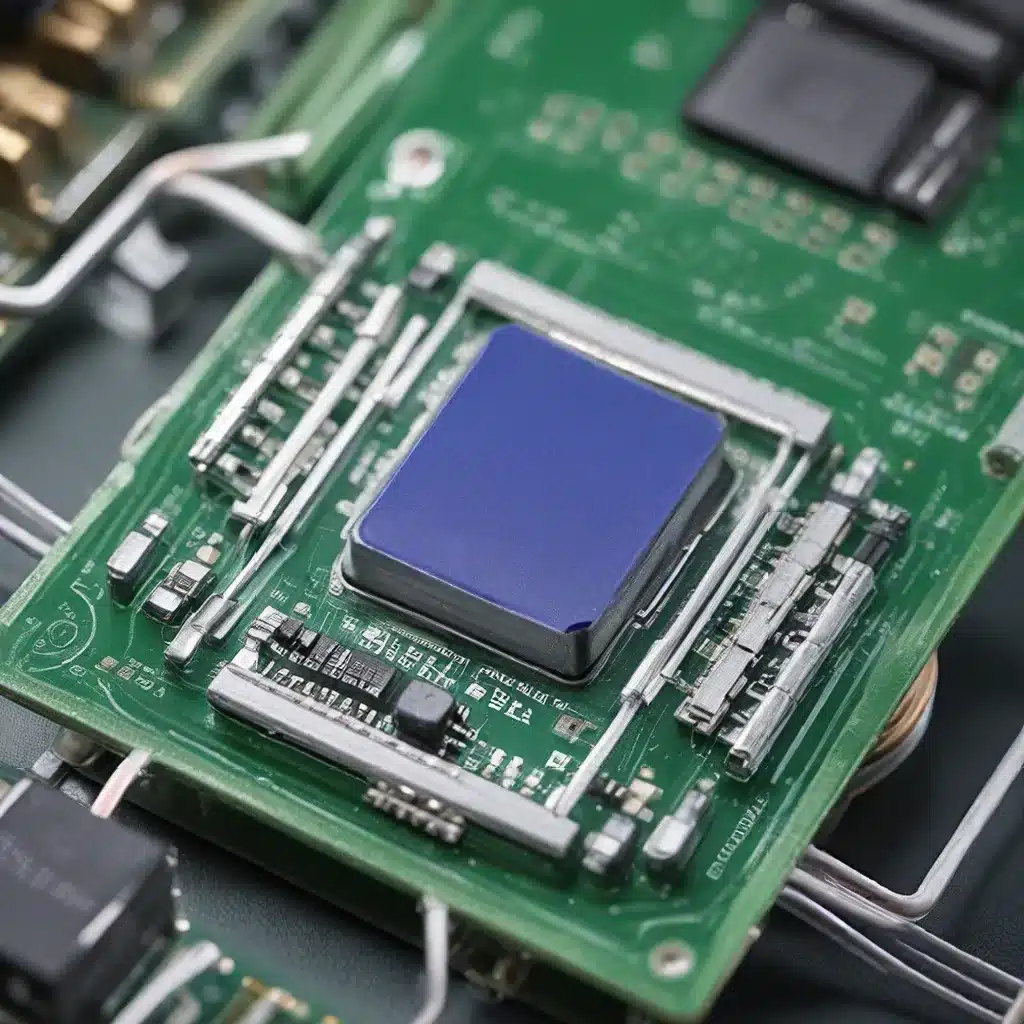
As the world becomes increasingly interconnected through the Internet of Things (IoT), the role of sensor networks has become paramount. These networks of smart, interconnected devices are revolutionizing how we gather, analyze, and act upon data in a wide range of applications, from industrial automation to environmental monitoring. However, a key challenge in sensor network design is ensuring efficient power management and maximizing the operational lifespan of these nodes.
The Challenge of Power Constraints in Sensor Networks
Sensor networks often operate in remote or hard-to-access locations, making battery replacement or regular maintenance a significant challenge. Traditional power management protocols that rely on complex wake-up/sleep schedules can be inefficient and contribute to premature node failures. Furthermore, the size and weight constraints of sensor nodes limit the capacity of onboard batteries, further exacerbating the power management challenge.
To address these limitations, researchers and engineers have been exploring innovative approaches to energy-efficient sensor node design. These advancements focus on two key areas: power management optimization and energy harvesting technologies.
Optimizing Power Management in Sensor Nodes
Power management is a critical aspect of sensor node design, as it directly impacts the operational lifetime of the network. Conventional power management techniques, such as duty-cycling and adaptive sampling, have had limited success in prolonging the lifespan of sensor nodes.
Recent research has introduced more advanced power management schemes that eliminate the need for complex wake-up/sleep schedules. These innovative approaches leverage smart power management algorithms and hardware-software co-design to minimize energy consumption without sacrificing performance or responsiveness.
One such example is the power management scheme that adaptively adjusts the power states of individual components within the sensor node, such as the microcontroller, wireless transceiver, and sensors. By intelligently managing the power states of these subsystems, the overall energy consumption can be significantly reduced, extending the node’s operational lifetime.
Furthermore, researchers are exploring the use of machine learning and predictive analytics to optimize power management strategies. By analyzing sensor data and usage patterns, these techniques can predict and proactively manage the power consumption of sensor nodes, further enhancing their energy efficiency.
Harvesting Energy for Sustainable Sensor Networks
While power management optimization is crucial, the inherent limitations of battery-powered sensor nodes have driven the development of energy harvesting technologies. By leveraging ambient energy sources, such as solar, thermal, or kinetic energy, sensor nodes can potentially achieve perpetual operation without the need for frequent battery replacements.
Energy harvesting offers a promising solution to the sustainability limitations arising from battery size constraints in sensor networks. However, the integration of energy harvesting systems into sensor nodes presents its own set of challenges, such as:
- Efficient Energy Conversion: Ensuring that the harvested energy is effectively converted and stored for use by the sensor node’s electronics.
- Adaptive Power Management: Developing power management strategies that can dynamically adjust to fluctuations in the available harvested energy.
- Sensor Node Design Integration: Seamlessly integrating energy harvesting components into the overall sensor node architecture without compromising size, weight, or performance.
Researchers are addressing these challenges through innovative designs and the development of multi-source energy harvesting systems. By combining multiple energy sources, such as solar and vibration, sensor nodes can achieve more reliable and consistent power generation, improving the overall energy autonomy of the network.
Enabling Secure and Resilient Sensor Networks
As sensor networks become more prevalent in critical infrastructure and sensitive applications, the security of these systems has become a growing concern. Sensor nodes, with their limited computing resources and exposed deployment environments, are vulnerable to a range of cyber threats, from data tampering to node compromise.
To address these security challenges, researchers are exploring secure sensor node architectures, which incorporate hardware-based security features, such as trusted execution environments and physical unclonable functions (PUFs). These technologies help to ensure the integrity and confidentiality of sensor data, even in the face of potential attacks.
Additionally, cryptographic techniques tailored for resource-constrained sensor nodes are being developed, enabling end-to-end data encryption and secure communication within the network. By combining these security measures with energy-efficient design, sensor networks can become more resilient and trustworthy, paving the way for their widespread adoption in mission-critical applications.
The Future of Energy-Efficient Sensor Networks
The advancements in power management and energy harvesting technologies are poised to revolutionize the field of sensor networks, unlocking new possibilities for IoT applications. By addressing the fundamental challenge of power constraints, these innovations are enabling sensor nodes to operate for longer durations, reduce maintenance requirements, and expand the reach of sensor network deployments.
As the sensor network ecosystem continues to evolve, we can expect to see even more exciting developments in areas such as:
- Adaptive and Autonomous Sensor Nodes: Sensor nodes that can dynamically adjust their power consumption, sensing, and communication activities based on environmental conditions and operational requirements.
- Multi-Modal Energy Harvesting: Sensor nodes that can harvest energy from a diverse range of ambient sources, including solar, thermal, vibration, and radio frequency (RF), to ensure reliable and continuous power generation.
- Integrated Sensor Architectures: Sensor node designs that seamlessly combine energy harvesting, power management, computing, and communication capabilities, enabling truly self-sustaining and intelligent sensor systems.
- Edge Computing and Distributed Intelligence: Sensor networks that leverage edge computing and distributed intelligence to perform real-time data processing and decision-making, reducing the need for constant cloud connectivity and improving overall system resilience.
As the sensor network ecosystem continues to evolve, these advancements in energy-efficient sensor node design will pave the way for a future where sensor networks are ubiquitous, reliable, and sustainable, transforming the way we interact with and monitor the world around us.